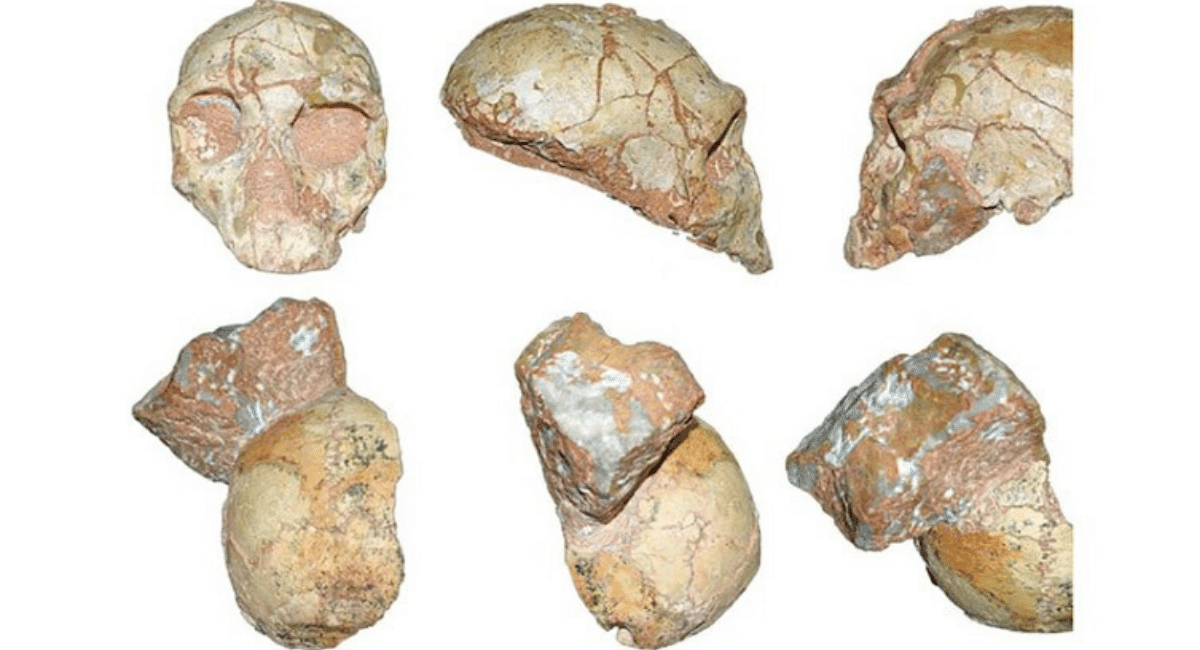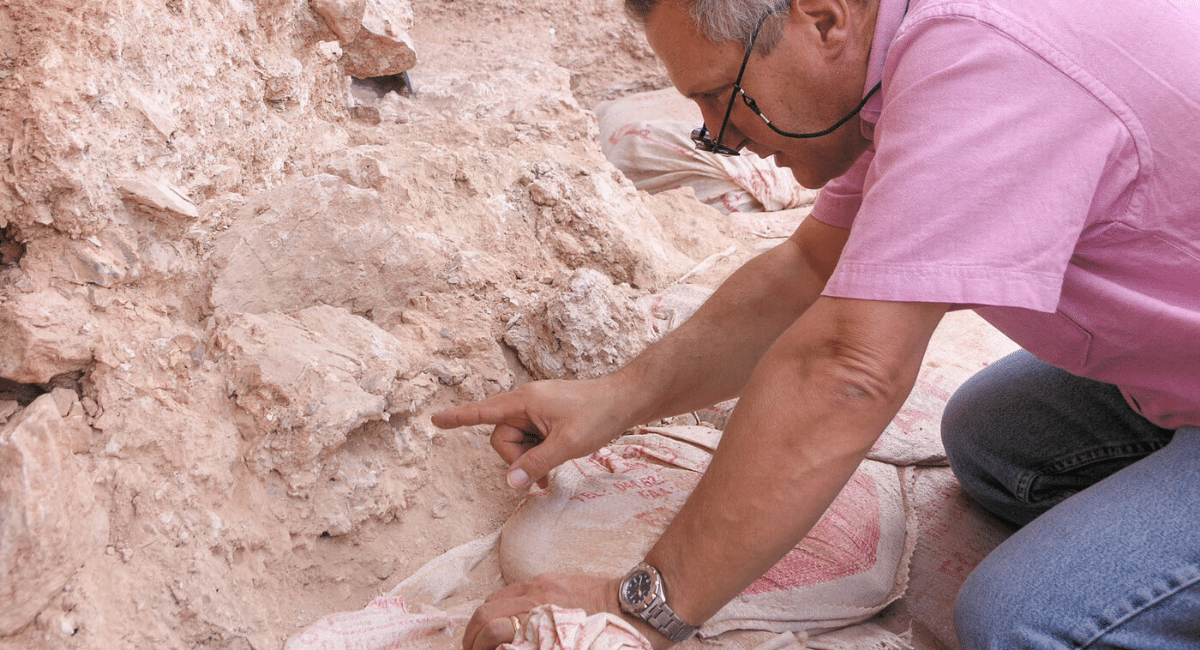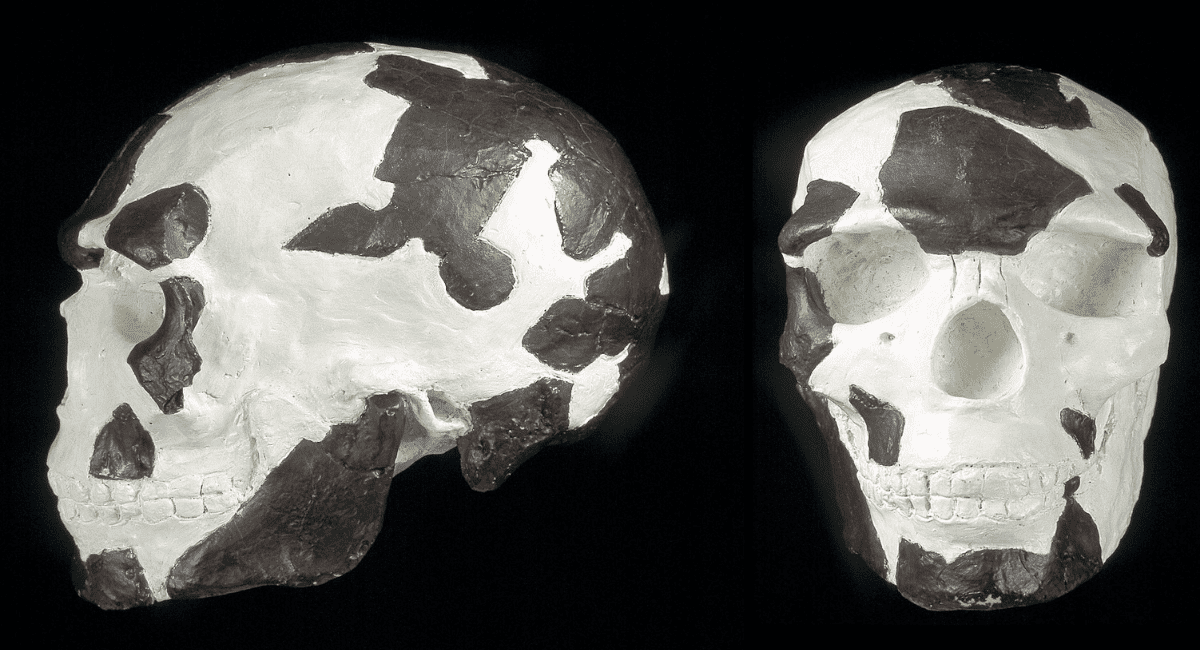Homo Sapiens: An Ancient Human Fossil Older Than We Thought
September 13, 2022 By Saloni Behl

(Image Credit Google)
 The fossil's age has been questioned in the past by attempts to date it and distinguish it from other layers. But the scientists behind this new Study believe they have finally solved the problem. Omo I's minimum age is 233,000 years, rather than the 197,000-year-old estimate.
"She added: "In terms of age, the Omo I fossil is the oldest Homo Sapiens we know of, and until now, it was considered to be younger than 200,000 years old."
Our best estimate at the moment is within 350,000-200,000 years from the emergence of mankind, which is consistent with recent evolution models."
The new Study's first author is Céline Vidal, a volcanologist at Cambridge University. In 1967, the Omo I skeleton was discovered in southwestern Ethiopia's Omo Kibish Formation. An area prone to volcanic activity, the East African Rift valley is home to the site. In 1967, the Omo I skeleton was discovered in southwestern Ethiopia's Omo Kibish Formation.
The fossil's age has been questioned in the past by attempts to date it and distinguish it from other layers. But the scientists behind this new Study believe they have finally solved the problem. Omo I's minimum age is 233,000 years, rather than the 197,000-year-old estimate.
"She added: "In terms of age, the Omo I fossil is the oldest Homo Sapiens we know of, and until now, it was considered to be younger than 200,000 years old."
Our best estimate at the moment is within 350,000-200,000 years from the emergence of mankind, which is consistent with recent evolution models."
The new Study's first author is Céline Vidal, a volcanologist at Cambridge University. In 1967, the Omo I skeleton was discovered in southwestern Ethiopia's Omo Kibish Formation. An area prone to volcanic activity, the East African Rift valley is home to the site. In 1967, the Omo I skeleton was discovered in southwestern Ethiopia's Omo Kibish Formation.
 An area prone to volcanic activity, the East African Rift valley is home to the site. Vidal is part of a research project that aims to understand the history and timing of several eruptions in Ethiopia's Rift between 300,000-60,000 years ago. Vidal described the project as "poorly researched." These data will allow scientists to understand better the possible connections between human evolution and eruptions in the Ethiopian Rift.
"Vidal explained that they have been studying volcanic rocks from these eruptions to determine when they occurred and their chemical fingerprint," Vidal added. Each eruption has its chemical signature. These fingerprints allowed us to track fine ash that had traveled hundreds of miles from the volcanoes using these fingerprints. These ash layers can also be found in Ethiopia at archaeological sites, where tools and fossils from our ancestors are identified."
The traditional radiometric or isotopic techniques for dating ash are not very reliable. However, by studying the chemical compositions of pumice rocks samples taken from volcanic deposits, the team could date all significant volcanic eruptions in Africa during the Late Middle Pleistocene, when our species first appeared.
Omo I was discovered in sediments below a 6-foot layer of volcanic ash. The ash is too fine-grained and can't be immediately dated. Vidal stated that the ash layer directly above Omo I's fossil "is the key to constraining its minimum age." Vidal and her colleagues analyzed the ash and compared it to other eruptions in Ethiopia's Rift. They were able to link the volcanic deposits with a significant explosion at Shala volcano, located approximately 250 miles (400 km) away.
An area prone to volcanic activity, the East African Rift valley is home to the site. Vidal is part of a research project that aims to understand the history and timing of several eruptions in Ethiopia's Rift between 300,000-60,000 years ago. Vidal described the project as "poorly researched." These data will allow scientists to understand better the possible connections between human evolution and eruptions in the Ethiopian Rift.
"Vidal explained that they have been studying volcanic rocks from these eruptions to determine when they occurred and their chemical fingerprint," Vidal added. Each eruption has its chemical signature. These fingerprints allowed us to track fine ash that had traveled hundreds of miles from the volcanoes using these fingerprints. These ash layers can also be found in Ethiopia at archaeological sites, where tools and fossils from our ancestors are identified."
The traditional radiometric or isotopic techniques for dating ash are not very reliable. However, by studying the chemical compositions of pumice rocks samples taken from volcanic deposits, the team could date all significant volcanic eruptions in Africa during the Late Middle Pleistocene, when our species first appeared.
Omo I was discovered in sediments below a 6-foot layer of volcanic ash. The ash is too fine-grained and can't be immediately dated. Vidal stated that the ash layer directly above Omo I's fossil "is the key to constraining its minimum age." Vidal and her colleagues analyzed the ash and compared it to other eruptions in Ethiopia's Rift. They were able to link the volcanic deposits with a significant explosion at Shala volcano, located approximately 250 miles (400 km) away.
 "Vidal stated that the source of the ash was a massive eruption of the Shala volcano, which took place around 233,000 years ago. This means Omo is more than 230,000 years old."
The traditional radiometric or isotopic techniques for dating ash are not very reliable. However, by studying the chemical compositions of pumice rocks samples taken from volcanic deposits, the team could date all significant volcanic eruptions in Africa during the Late Middle Pleistocene, when our species first appeared.
Omo I was discovered in sediments below a 6-foot layer of volcanic ash. The ash is too fine-grained and can't be immediately dated. Vidal stated that the ash layer directly above Omo I's fossil "is the key to constraining its minimum age." Vidal and her colleagues analyzed the ash and compared it to other eruptions in Ethiopia's Rift. They were able to link the volcanic deposits with a significant explosion at Shala volcano, located approximately 250 miles (400 km) away.
"Vidal stated that the source of the ash was a massive eruption of the Shala volcano, which took place around 233,000 years ago. This means Omo is more than 230,000 years old."
The traditional radiometric or isotopic techniques for dating ash are not very reliable. However, by studying the chemical compositions of pumice rocks samples taken from volcanic deposits, the team could date all significant volcanic eruptions in Africa during the Late Middle Pleistocene, when our species first appeared.
Omo I was discovered in sediments below a 6-foot layer of volcanic ash. The ash is too fine-grained and can't be immediately dated. Vidal stated that the ash layer directly above Omo I's fossil "is the key to constraining its minimum age." Vidal and her colleagues analyzed the ash and compared it to other eruptions in Ethiopia's Rift. They were able to link the volcanic deposits with a significant explosion at Shala volcano, located approximately 250 miles (400 km) away.
 The Jebel Irhoud fossils "present some characteristics of Homo Sapiens but are not considered as complete Homo Sapiens," said Vidal. On the other hand, Omo I has features consistent with anatomically modern human beings, such as a tall, round skullcap and a chin on its mandible.
The new work, however, "is important in showing that the Omo I Skelet is pretty certain more than 230,000 years older than previously thought," Chris Stringer (an anthropologist at London's Natural History Museum of London) wrote in an email.
"And on the preserved parts, this is an anatomically modern human and thus the oldest known. Homo Sapiens lineage probably stretches back even further, for at least another 300,000 years, although early family members would not have exhibited all the 'modern' traits that followed."
Stringer was disappointed that the new Study didn't include a paper he co-authored in 2012. This paper dated Omo I. Stringer's team could not estimate an age below 195,000 years for that paper. However, it suggested a period greater than 195,000 years.
Vidal answered a question about what excites her the most about the new paper from her team by saying that it was her excitement at discovering new things every day. "Science is always in motion; boundaries and timelines change as our understanding improves. Yet, there is still so much to uncover—we only see what is at the surface," Vidal said. "It is fascinating to think that before smartphones and vaccines, we adapted, moved, and survived catastrophic eruptions and climate change. There is much to learn from our natural innate resilience as a species."
The Jebel Irhoud fossils "present some characteristics of Homo Sapiens but are not considered as complete Homo Sapiens," said Vidal. On the other hand, Omo I has features consistent with anatomically modern human beings, such as a tall, round skullcap and a chin on its mandible.
The new work, however, "is important in showing that the Omo I Skelet is pretty certain more than 230,000 years older than previously thought," Chris Stringer (an anthropologist at London's Natural History Museum of London) wrote in an email.
"And on the preserved parts, this is an anatomically modern human and thus the oldest known. Homo Sapiens lineage probably stretches back even further, for at least another 300,000 years, although early family members would not have exhibited all the 'modern' traits that followed."
Stringer was disappointed that the new Study didn't include a paper he co-authored in 2012. This paper dated Omo I. Stringer's team could not estimate an age below 195,000 years for that paper. However, it suggested a period greater than 195,000 years.
Vidal answered a question about what excites her the most about the new paper from her team by saying that it was her excitement at discovering new things every day. "Science is always in motion; boundaries and timelines change as our understanding improves. Yet, there is still so much to uncover—we only see what is at the surface," Vidal said. "It is fascinating to think that before smartphones and vaccines, we adapted, moved, and survived catastrophic eruptions and climate change. There is much to learn from our natural innate resilience as a species."
Leave a Reply

Apple's iOS 18: A Leap into the AI Era
March 12, 2024

Google's Regular Pixel 8 Won't Get Gemini Nano AI
March 12, 2024

MacBook Air M3 Makes Amends for M2's Storage Blunder
March 11, 2024

Samsung Unveils the Galaxy M15 5G
March 11, 2024

Elon Musk's xAI to Open-Source Chatbot Grok
March 11, 2024

Contra: Operation Galuga - A Modern Run-and-Gun Classic
March 11, 2024

Musk Confirms X's TV App Arrives This Week
March 11, 2024
RELATED NEWS
2
3
4
5
6
7
8
9
10



